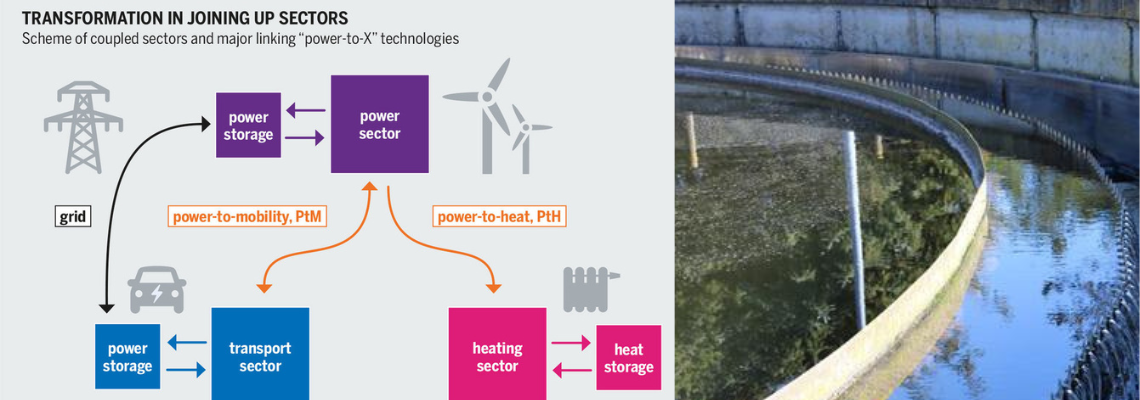Water reuse could quench ‘power-to-x’s’ thirst in Denmark

What is power-to-x and why is it so thirsty? Aquatech Online looks at how wastewater in Denmark could provide a solution.
PtX and its water demand
Groundwater is taken very seriously in Denmark, with a policy based on prevention rather than treatment. As a result, Denmark has rules on the maximum amount Danish water and wastewater utilities can demand from consumers.
And with over 1,000 treatment plants across the country taking wastewater from its 5.8 million population, Denmark has a healthy supply of treated wastewater.
This is why Danish water utility, Din Forsyning is collaborating with consultancy company NIRAS, see if they can make a water-heavy industry more sustainable.
Power-to-x (PtX) is a term that will become more common in the coming decade.
Essentially, PtX is an umbrella term for several conversion, storage, and reconversion pathways that use surplus electric power from renewable energy, typically solar and wind.
PtX requires large amounts of water and currently relies on groundwater for its needs. However, due to the large draw on groundwater supplies, DIN Forsyning is looking to see if treated wastewater could be used instead.
Denmark has recently announced plans for several PtX plants to be built across the country including in Esbjerg, a seaport town in the southwest of the country.
HØST PtX Esbjerg is a Danish PtX project under development, deploying large-scale industrial use of electrolysis technology at the gigawatt level to produce ammonia.
Powered entirely by renewables, HØST PtX Esbjerg will produce green ammonia for use in fertilizers and in fuels, contributing to the long-term sustainability of agriculture and shipping.
But just how much water will it need?
Thirsty work
According to Din Forsyning, HØST PtX Esbjerg will need 1.3 million cubic metres of ultrapure water annually to keep up with its planned production targets.
DIN Forysning believes treated wastewater could be a solution to making PtX more sustainable, adding that it already pumps 15 million cubic metres of treated wastewater into the sea annually.
Another advantage of using treated wastewater is that it avoids pumping groundwater with salts and minerals up from the subsoil, then purifying it and directing the residual water with an increased concentration of salts through the treatment plant for treatment.
On top of this, the infrastructure for the treated wastewater already exists and can simply be diverted.
“We are very careful to protect nature's resources, and if it is technically possible to use treated wastewater in the production phase, we have achieved another breakthrough.”
The only challenge is seeing if treated wastewater can be integrated into the PtX production, which the collaboration with NIRAS will further explore.
Jens Brandt Bering, director of supply at NIRAS, said: "We see great potential in helping to develop the technology in terms of using treated wastewater in Power-to-X.
"Water is located together with authority permits and access to sufficient quantities of green power - on a critical path when the PtX potential is to be released, and therefore our current collaboration with DIN Forsyning is of great importance."
The Høst PtX power-to-x plant is expected to be ready in 2026.
David Dupont-Mouritzen, project director at Høst PtX Esbjerg, added: "The entire Høst PtX Esbjerg project is based on sustainability, and every single time we can take a step further in that direction, it is only positive.”
He added: "We are constantly looking for the technological opportunities that make the smallest impact on nature and the environment - locally and globally, so if we with our facilities can help minimize wastewater discharge locally, then we are very satisfied."


